Exposure to the smell and taste of milk to accelerate feeding in preterm infants
- PMID: 38721883
- PMCID: PMC11079971
- DOI: 10.1002/14651858.CD013038.pub3
Exposure to the smell and taste of milk to accelerate feeding in preterm infants
Abstract
Background: Preterm infants (born before 37 weeks' gestation) are often unable to co-ordinate sucking, swallowing, and breathing for oral feeding because of their immaturity. In such cases, initial nutrition is provided by orogastric or nasogastric tube feeding. Feeding intolerance is common and can delay attainment of full enteral and sucking feeds, prolonging the need for nutritional support and the hospital stay. Smell and taste play an important role in the activation of physiological pre-absorptive processes that contribute to food digestion and absorption. However, during tube feeding, milk bypasses the nasal and oral cavities, limiting exposure to the smell and taste of milk. Provision of the smell and taste of milk with tube feeds offers a non-invasive and low-cost intervention that, if effective in accelerating the transition to enteral feeds and subsequently to sucking feeds, would bring considerable advantages to infants, their families, and healthcare systems.
Objectives: To assess whether exposure to the smell or taste (or both) of breastmilk or formula administered with tube feeds can accelerate the transition to full sucking feeds without adverse effects in preterm infants.
Search methods: We conducted searches in CENTRAL, MEDLINE, Embase, CINAHL, and Epistemonikos to 26 April 2023. We also searched clinical trial databases and conference proceedings.
Selection criteria: We included randomised and quasi-randomised studies that evaluated exposure versus no exposure to the smell or taste of milk (or both) immediately before or at the time of tube feeds.
Data collection and analysis: Two review authors independently selected studies, assessed risk of bias, and extracted data according to Cochrane Neonatal methodology. We performed meta-analyses using risk ratios (RRs) for dichotomous data and mean differences (MDs) for continuous data, with their respective 95% confidence intervals (CIs). We used GRADE to assess the certainty of evidence.
Main results: We included eight studies (1277 preterm infants). Seven studies (1244 infants) contributed data for meta-analysis. The evidence suggests that exposure to the smell and taste of milk with tube feeds has little to no effect on time taken to reach full sucking feeds (MD -1.07 days, 95% CI -2.63 to 0.50; 3 studies, 662 infants; very low-certainty evidence). Two studies reported no adverse effects related to the intervention. The intervention may have little to no effect on duration of parenteral nutrition (MD 0.23 days, 95% CI -0.24 to 0.71; 3 studies, 977 infants; low-certainty evidence), time to reach full enteral feeds (MD -0.16 days, 95% CI -0.45 to 0.12; 1 study, 736 infants; very low-certainty evidence) or risk of necrotising enterocolitis (RR 0.93, 95% CI 0.47 to 1.84; 2 studies, 435 infants; low-certainty evidence), although the evidence for time to reach full enteral feeds is very uncertain. Exposure to the smell and taste of milk with tube feeds probably has little to no effect on risk of late infection (RR 1.14, 95% CI 0.74 to 1.75; 2 studies, 436 infants; moderate-certainty evidence). There were no data available to assess feeding intolerance. The included studies had small sample sizes and methodological limitations, including unclear or lack of randomisation (four studies), lack of blinding of participants and personnel (five studies), unclear or lack of blinding of the outcome assessor (all eight studies), and different inclusion criteria and methods of administering the interventions.
Authors' conclusions: The results of our meta-analyses suggest that exposure to the smell and taste of milk with tube feeds may have little to no effect on time to reach full sucking feeds and time to reach full enteral feeds. We found no clear difference between exposure and no exposure to the smell or taste of milk on safety outcomes (adverse effects, necrotising enterocolitis, and late infection). Results from one ongoing study and two studies awaiting classification may alter the conclusions of this review. Future research should examine the effect of exposing preterm infants to the smell and taste of milk with tube feeds on health outcomes during hospitalisation, such as attainment of feeding skills, safety, feed tolerance, infection, and growth. Future studies should be powered to detect the effect of the intervention in infants of different gestational ages and on each sex separately. It is also important to determine the optimal method, frequency, and duration of exposure.
Copyright © 2024 The Cochrane Collaboration. Published by John Wiley & Sons, Ltd.
Conflict of interest statement
LDP: none known. AB: none known. MM: was a member of the study team for one included study (Bloomfield 2023), but she did not select this study or perform data extraction, risk of bias assessment, or GRADE assessment for this study as part of the review. Her institution receives a grant from the Kelliher Charitable Trust to fund her postdoctoral fellowship. LL: none known. JH: authored one included study (Bloomfield 2023), but she did not select this study or perform data extraction, risk of bias assessment, or GRADE assessment for this study as part of the review. She is the co‐investigator for a grant from the Health Research Council of New Zealand (16/605) for Bloomfield 2023. Her salary is funded in part by this grant. She has given multiple lectures and published some review articles which relate to the material included in this review, none directly reporting the contents of the review. FB: authored two included studies (Bloomfield 2023; Beker 2017), but he did not select these studies or perform data extraction, risk of bias assessment, or GRADE assessment for either study as part of the review. He is the principal investigator for the Diamond trial (Bloomfield 2023). He received a programme grant from the Health Research Council of New Zealand and Ka Awatea Trust, Counties Manukau Health into nutrition of preterm babies, including funding the DIAMOND trial (Bloomfield 2023), a factorial RCT of nutritional interventions in moderate‐late preterm babies, including exposure to smell and taste prior to tube feeds. The trial sponsor was the University of Auckland, Auckland, New Zealand. He has published opinions in medical journals relevant to the interventions in the work.
Figures
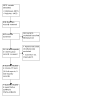

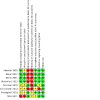
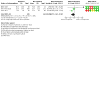

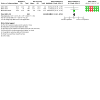

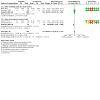
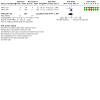



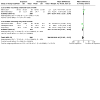

Update of
-
Exposure to the smell and taste of milk to accelerate feeding in preterm infants.Cochrane Database Syst Rev. 2019 Jul 16;7(7):CD013038. doi: 10.1002/14651858.CD013038.pub2. Cochrane Database Syst Rev. 2019. Update in: Cochrane Database Syst Rev. 2024 May 9;5:CD013038. doi: 10.1002/14651858.CD013038.pub3. PMID: 31311064 Free PMC article. Updated.
References
References to studies included in this review
Alemdar 2020 {published data only}
Beker 2017 {published data only}
-
- ACTRN12614000661673. Taste and smell to improve milk tolerance in preterm infants [Exposing preterm infants to the taste and smell of their milk, or not exposing them to the taste and smell of their milk to investigate the effect on milk tolerance]. anzctr.org.au/Trial/Registration/TrialReview.aspx?id=366080&isReview... (first received 24 June 2014). [CENTRAL: CN-02440207]
Beker 2021 {published data only}
-
- ACTRN12617000583347. Effect of smell and taste to improve nutrition in very preterm babies.. anzctr.org.au/Trial/Registration/TrialReview.aspx?id=372308&isReview... (first received 19 April 2017). [CENTRAL: CN-01884678]
Bloomfield 2023 {published and unpublished data}
-
- ACTRN12616001199404. DIAMOND - DIfferent Approaches to MOderate & late preterm Nutrition: Determinants of feed tolerance, body composition and development. anzctr.org.au/Trial/Registration/TrialReview.aspx?id=371006 (first received 31 August 2016). [CENTRAL: CN-01913449]
-
- Bloomfield F, Harding J, Jiang Y, Meyer M, Wall C, Alsweiler J, et al. The DIAMOND Trial - different approaches to moderate & late preterm nutrition - determinants of feed tolerance, body composition and development. ESPGHAN 55th Annual Meeting Abstracts. 2023 May 17 -20. Vienna, Austria. Journal of Pediatric Gastroenterology and Nutrition 2023;76(S1 Suppl 1):980. [DOI: 10.1097/MPG.0000000000003823] - DOI
-
- Bloomfield FH, Harding JE, Meyer MP, Alsweiler JM, Jiang Y, Wall CR, et al, DIAMOND Study Group. The DIAMOND trial – DIfferent Approaches to MOderate & late preterm Nutrition: Determinants of feed tolerance, body composition and development: protocol of a randomised trial. BMC Pediatrics 2018;18:220. [DOI: 10.1186/s12887-018-1195-7] [PMID: ] - DOI - PMC - PubMed
Davidson 2019 {published data only}
-
- Davidson J, Hwang JS, Kosow M, Maron JL. Optimal timing and sex specific responses to olfactory stimulation with mother's own milk to decrease the time to full oral feeds in premature infants. In: Pediatric Academic Societies (PAS) Annual Meeting; 2015 Apr 25 - 28; San Diego, USA. 2015.
Iranmanesh 2014 {published data only}
-
- IRCT2014031916538N1. The effect of breast milk odor on transitonal time from gavage to oral feeding in premature infants hospitalized in Nicu of Valiasr and comprehensie women hospital in 1392 in Tehran [The effect of mother' milk odor in gavage weaning time in premature infants]. irct.behdasht.gov.ir/trial/15457 (first received 19 March 2014). [CENTRAL: CN-01839508]
-
- Iranmanesh S, Shamsi A, Aboli B, Movahedi Z. The effect of breast milk odor on transition time from gavage to oral feeding and hospital stay in premature infants. ICAN: Infant, Child, & Adolescent Nutrition 2015;7(1):5-11. [DOI: 10.1177/1941406414563390] - DOI
Khodagholi 2018 {published data only}
-
- IRCT2016082829574N1. Assessment of the effect of integrated mother's milk odor and Nonnutritive Sucking on the time of achievement independent oral feeding in preterm neonates [The effect of mother milk odor and nonnutritive sucking on independent feeding]. irct.behdasht.gov.ir/trial/23732 (first received 3 March 2017). [CENTRAL: CN-01881054]
Yildiz 2011 {published data only}
References to studies excluded from this review
Bingham 2007 {published data only}
Karbandi 2015 {published data only}
-
- IRCT2014070818397N1. Effect of breast milk odor on physiologic parameter and weight in premature neonate [Clinlcal trial, effect of breast milk odor and formula milk odor and distilled water on physiologic parameter and weight changes in premature infants]. irct.behdasht.gov.ir/trial/16703 (first received 3 September 2014). [CENTRAL: CN-01812263]
-
- Karbandi S, Dehghanian N, Pourarian S, Salari M. The effect of breast milk odor on concentration percentage of oxygen saturation and respiratory rate in premature infants [تأثير بوي شير مادر بر درصد غلظت اشباع اكسيژن و تعداد تنفس نوزاد نارس]. Evidence Based Care 2015;5(1):25-34. [DOI: 10.22038/ebcj.2015.4060] - DOI
Louyeh 2020 {published data only}
-
- Louyeh ZS, Naderifar M, Faghihi H, Lessen K, Brenda S, Mahmoodi N. Comparing the effect of breast milk odor and incubator cover on nutritional adequacy of premature infants: a quasi-experimental study. Medical-Surgical Nursing Journal 2020;9(2):1-6. [DOI: 10.5812/msnj.99993] - DOI
Neshat 2016 {published data only}
-
- Neshat H, Jebreili M, Seyyedrasouli A, Ghojazade M, Hosseini MB, Hamishehkar H. Effects of breast milk and vanilla odors on premature neonate's heart rate and blood oxygen saturation during and after venipuncture. Pediatrics and Neonatology 2016;57(3):225-31. [DOI: 10.1016/j.pedneo.2015.09.004] [PMID: ] - DOI - PubMed
References to studies awaiting assessment
DRKS00013093 {published data only}
-
- DRKS00013093. Comparison of the influence of olfactory stimulation with vanilla, breast milk or formula odor on the nasogastric tube weaning of preterm and term born infants. trialsearch.who.int/Trial2.aspx?TrialID=DRKS00013093 (first received 17 Nov 2017). [CENTRAL: CN-01889882]
NCT04843293 {published data only}
-
- NCT04843293. The effect of breast milk smell on nutrition in preterms [The effect of breast milk smell on early feeding cues, transition period to oral nutrition and abdominal perfusion in preterm newborns]. clinicaltrials.gov/ct2/show/study/NCT04843293 (first received 13 April 2021). [CENTRAL: CN-02253759]
References to ongoing studies
CTRI/2020/02/023412 {published data only}
-
- CTRI/2020/02/023412. Effect of taste and smell on feed tolerance in premature infant [Effect of gustatory and olfactory stimulation on feed tolerance in preterm infants less than 32 weeks and less than 1250g birth weight: a randomized controlled trial]. trialsearch.who.int/Trial2.aspx?TrialID=CTRI/2020/02/023412 (first received 18 Feb 2020). [CENTRAL: CN-02167044]
Additional references
ANZNN 2016
-
- Australian and New Zealand Neonatal Network. ANZNN 2017 Data Dictionary. anznn.net/Portals/0/DataDictionaries/ANZNN_2017_Data_Dictionary.pdf (accessed May 2018).
Bayley 2006
-
- Bayley N. Bayley scales of infant and toddler development. Journal of Psychoeducational Assessment: Harcourt Assessment 2006;25(2):180-98. [DOI: 10.1177/0734282906297199] - DOI
Bingham 2003
Bloomfield 2017
Cochrane EPOC 2017
-
- Cochrane Effective Practice and Organisation of Care (EPOC). Data Extraction and Management. EPOC Resources for Review Authors, 2017. epoc.cochrane.org/sites/epoc.cochrane.org/files/public/uploads/Resources....
Cormack 2016
Covidence 2023 [Computer program]
-
- Covidence. Melbourne, Australia: Veritas Health Innovation, accessed 26 April 2023. Available at covidence.org.
Dasgupta 2016
Deeks 2022
-
- Deeks JJ, Higgins JP, Altman DG. Chapter 10: Analysing data and undertaking meta-analyses. In: Higgins JP, Thomas J, Chandler J, Cumpston M, Li T, Page MJ, et al, editor(s). Cochrane Handbook for Systematic Reviews of Interventions Version 6.3 (updated August 2022). Cochrane, 2022. Available from training.cochrane.org/handbook/archive/v6.3.
Egger 1997
Fanaro 2013
Fenton 2013
Gargasz 2012
GRADEpro GDT [Computer program]
-
- GRADEpro GDT. Version accessed 19 January 2018. Hamilton (ON): McMaster University (developed by Evidence Prime), 2015. Available at gradepro.org.
Higgins 2017
-
- Higgins JP, Savović J, Page MJ, Elbers RG, Sterne JA. Chapter 8: Assessing risk of bias in a randomized trial. In: Higgins JP, Churchill R, Chandler J, Cumpston MS, editor(s). Cochrane Handbook for Systematic Reviews of Interventions Version 5.2.0 (updated June 2017). Cochrane, 2017. Available from training.cochrane.org/handbook/archive/v5.2.
Johnson 2014
-
- Johnson J, Patel AL, Bigger HR, Engstrom JL, Meier PP. Economic benefits and costs of human milk feedings: a strategy to reduce the risk of prematurity-related morbidities in very-low-birth-weight infants. Advances in Nutrition 2014;5(2):207-12. [DOI: 10.3945/an.113.004788] [PMID: ] - DOI - PMC - PubMed
Lipchock 2011
Marlier 1998
Mattes 1997
Moher 2009
Moore 2011
Muelbert 2021
-
- Muelbert M. Nutrition and Sensory Perception in the Newborn [Doctoral thesis]. Auckland (NZ): The University of Auckland Research Repository, 2021. [URL: researchspace.auckland.ac.nz/bitstream/handle/2292/57043/Muelbert-2021-t...
Nangia 2018
Patel 2005
Power 2008
RevMan Web 2023 [Computer program]
-
- Review Manager Web (RevMan Web). Version 5.8.0. The Cochrane Collaboration, 2023. Available at revman.cochrane.org.
Sarnat 1978
Schünemann 2013
-
- Schünemann H, Brożek J, Guyatt G, Oxman A, editor(s). Handbook for grading the quality of evidence and the strength of recommendations using the GRADE approach (updated October 2013). GRADE Working Group, 2013. gdt.guidelinedevelopment.org/app/handbook/handbook.html (accessed 18 May 2018).
Schünemann 2022
-
- Schünemann HJ, Higgins JP, Vist GE, Glasziou P, Akl EA, Skoetz N, et al. Chapter 14: Completing 'Summary of findings' tables and grading the certainty of the evidence. In: Higgins JP, Thomas J, Chandler J, Cumpston M, Li T, Page MJ, et al, editor(s). Cochrane Handbook for Systematic Reviews of Interventions Version 6.3 (updated February 2022). Cochrane, 2022. Available from www.training.cochrane.org/handbook/archive/v6.3.
Smeets 2010
The SIFT Investigators Group 2013
Toce 1987
Walsh 1986
WHO 2008
-
- World Health Organization. Indicators for assessing infant and young child feeding practices - part I: definition. Available at www.who.int/publications/i/item/9789240018389 (assessed 18 May 2018):1-19.
References to other published versions of this review
Muelbert 2018
Publication types
MeSH terms
LinkOut - more resources
Full Text Sources
Medical
Research Materials
Miscellaneous

